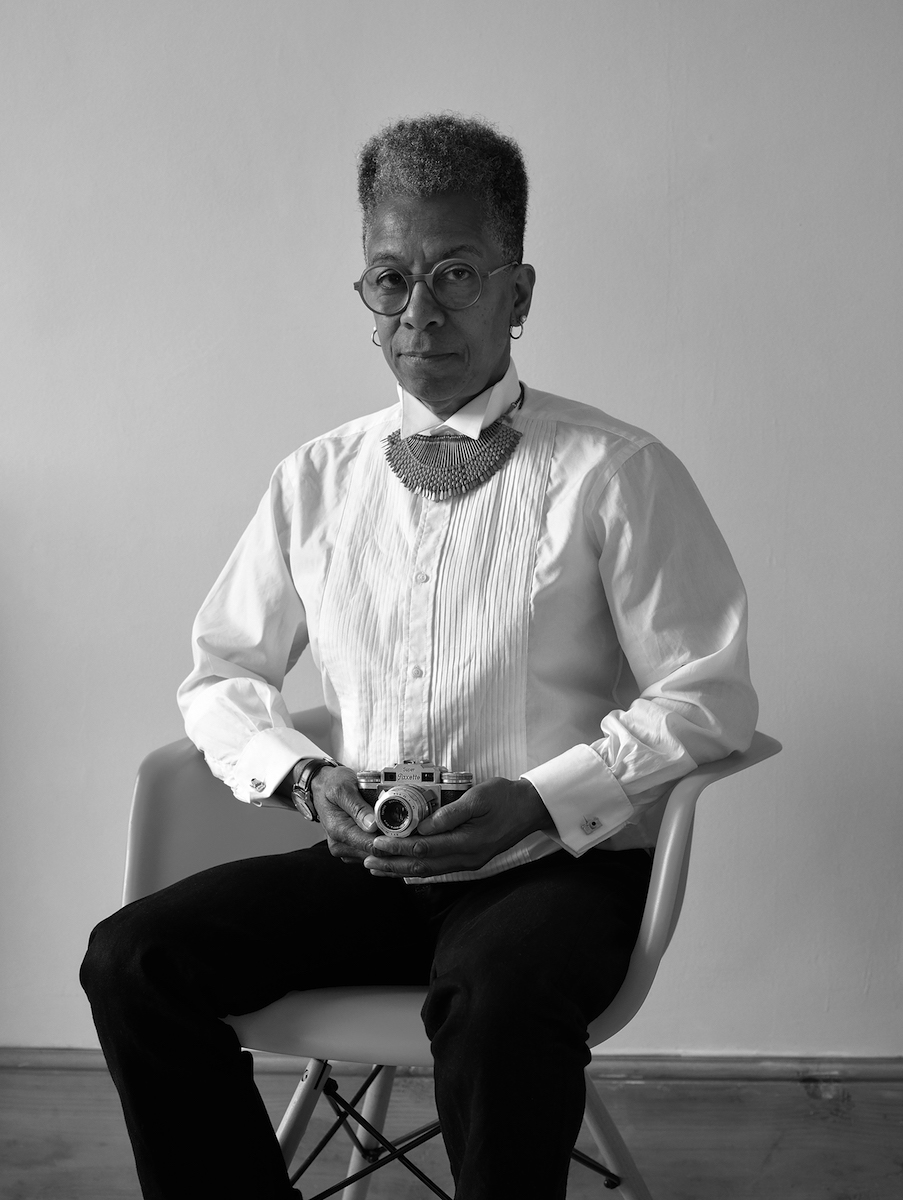“People always assume my work is about the landscape – about Black people in the landscape. They try to push whatever I do into that small subject area. There is little close observation of what is actually in the photograph”
Ingrid Pollard was born in Georgetown, Guyana, and grew up in London, where she has practised as an artist since the 1980s. After leaving school, Pollard made art while working several jobs, later studying at the London College of Printing and the University of Derby. The photographer has developed a social art practice aligned with the politics of race and feminism, which also focuses on the medium of photography itself. She has held residencies at organisations across the UK and numerous collections have acquired her work, including the V&A in London.
I was always an arty person. Young people find an outlet for their feelings. Mine was drawing rather than writing. I couldn’t spell to save my life – I had undiagnosed dyslexia.
I grew up with family albums from Guyana and here [in the UK]. When my parents were courting, my father made a photo album for my mother.
It was during my geography O-levels that I took my first photographs. I used my dad’s camera. He’d always had it for parties and holidays.
I came from a working-class background. The low expectations of Black children at school compounded this. They didn’t seem to understand my desire to go to art college. There was no career advice.
I worked as a cleaner; worked for the council; I gardened; I worked as a librarian at the British Library. There wasn’t a steady plan. But I was also drawing and taking photographs a lot.
I lived in a squatting community. Someone lent us an enlarger so I would print pictures at home in the kitchen at night. I went to evening classes to do screen-printing and pottery. Back then, people had hobbies for the fun of it, not because they wanted it to be their career.
My art practice aligned with the politics of race and feminism. We weren’t expecting to get exhibitions at the Tate; in the 1980s, people set up things of their own. We did shows in alternative spaces – community centres, cafes, libraries, our homes. We occupied spaces differently.
My practice is about photography and its history, method and material qualities. It can take the form of landscape or something else, but it is always about photography. It’s an obvious thing to say, but it doesn’t get said often.
People always assume my work is about the landscape – about Black people in the landscape. They try to push whatever I do into that small subject area. There is little close observation of what is actually in the photograph.
I went to university when I was 30. I was already working as a photographer. I did a film and video degree. Because of this, there is a lot of storytelling in my photographs.
When you make a film, you start with a blank white box. And then you add things: lighting, costume, the script. When I’m doing photography, I’m doing that as well.
People will view my photographs based on their life experiences – how they view photography, film and advertising. And also their relationship with Black people. People always see the work through their life stories.
Often the text in my pictures is not an explanation of the image. Sometimes they act in opposition to one another because that is what life is like. You can read the text, but you also have to look at the image closely.
There are never themes in my work in the formal sense of the word. Issues I am interested in may transform over time. Positioning usually informs my photographs, whether they appear in a book or a particular exhibition space. I think more in terms of parameters.
Things change. Some of them appear to change for the better. Some continue as they were.

